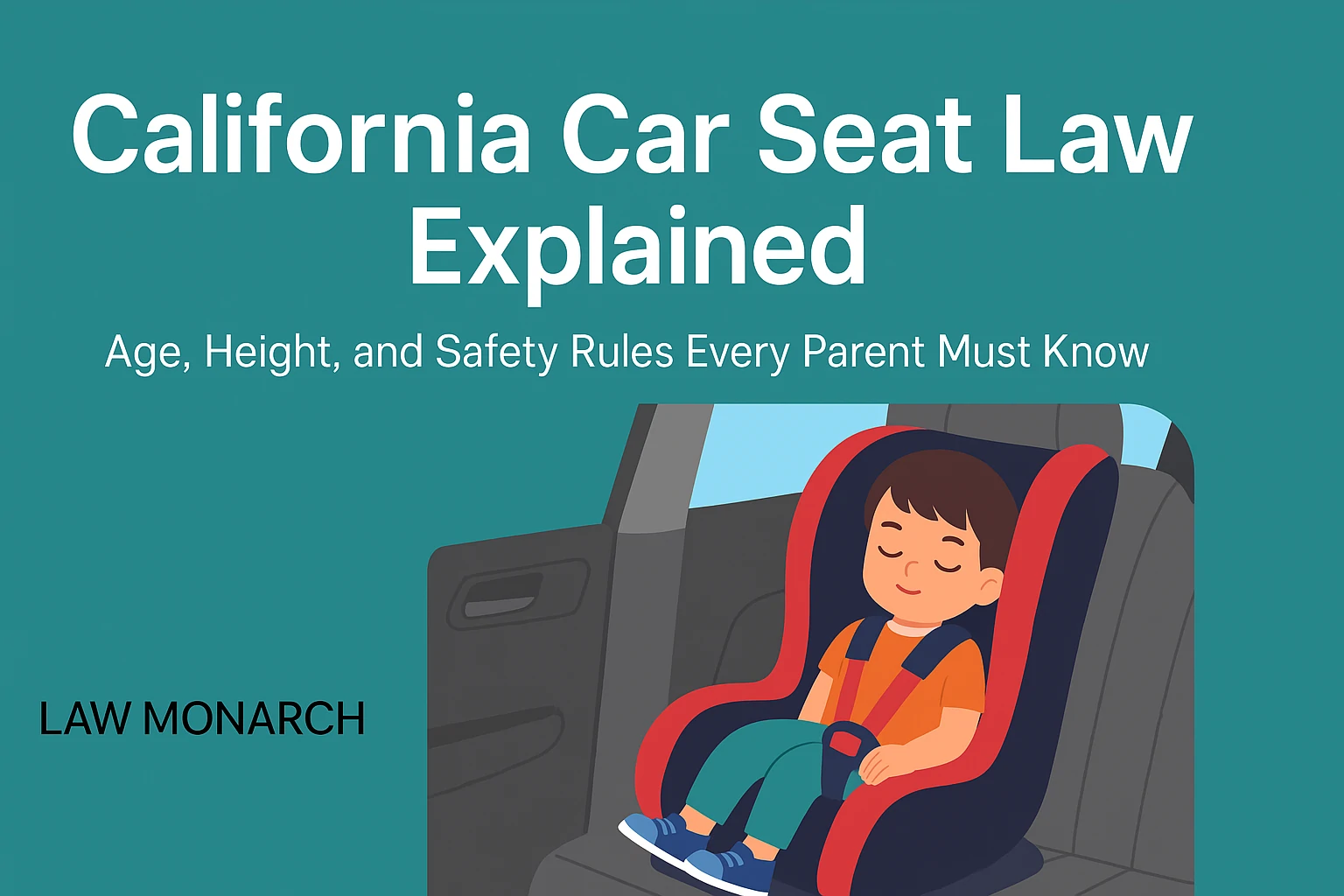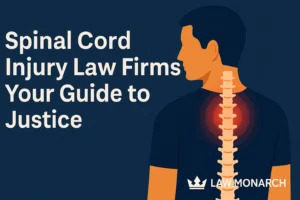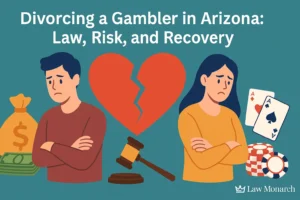Parents want their children safe every time they get into a car. In California, the law backs that goal with strict rules about car seats. These rules protect children and help drivers avoid fines. They apply to everyone, no matter if they live in the state or just drive through it. Knowing these rules helps protect lives.
Many drivers feel unsure about what type of seat to use. Some children look big enough to skip a booster, but the law says otherwise. Others ride in the front seat before the legal age. These small choices can bring big risks. California does not leave it to guesswork. It gives clear steps that match a child’s age, height, and weight.
Each rule fits the body of the child at that stage. A newborn needs full support. A toddler needs restraint. A school-age child needs a boost so the seat belt fits right. Car seats, harnesses, and boosters must meet federal safety standards and be used the way the law requires. This guide explains it all in a way that is easy to follow.
Rear-Facing Seats: Start Here
Children under two must ride in a rear-facing car seat under California law. The rule allows an exception only if the child weighs 40 pounds or more or is at least 40 inches tall. The car seat must go in the back. That spot offers the most safety for small children.
Rear-facing seats protect the child’s head, neck, and spine. In a crash, they hold the body in place and reduce the chance of injury. Parents must follow the seat instructions closely. Most seats use a base that locks into the vehicle. The harness must fit snug and lie flat. The chest clip must sit at armpit level.
Some drivers move the seat forward too soon. That breaks the law and puts the child in danger. If the child still fits the rear-facing seat, do not switch. The law gives the minimum age, not a signal to move forward. Experts advise parents to keep children rear-facing as long as the seat fits their size.
Forward-Facing Seats: The Next Step
Once a child outgrows the rear-facing seat, they move to a forward-facing one with a harness. This seat must also go in the back. The child must stay in this type of seat until they reach the top height or weight limit. That limit varies by seat model. Some go up to 65 pounds or more.
The harness holds the child’s body and spreads crash force across strong parts like the shoulders and hips. This lowers the chance of serious injury. The seat must be tight against the vehicle. Use either the seat belt or the lower anchors, but not both unless allowed in the manual. Check the straps before every ride. Loose straps mean less safety.
Drivers should not rush this step. Children often want to sit in a booster or wear a regular seat belt. That can wait. A forward-facing harness gives better protection than a booster. Keep the child in this seat as long as they still fit.
Booster Seats: Raising the Bar
Children who pass the harness size limit must use a booster seat. California law requires all children under age eight to use one unless they are at least 4 feet 9 inches tall. The booster raises the child so the seat belt fits the right way. It must sit across the upper thighs and shoulder. Not the belly or the neck.
Some boosters have backs, others do not. A backless booster needs a vehicle seat with a headrest. Both types work if they make the belt fit right. The law does not say which type to use. That choice depends on the car and the child’s needs.
Children must sit in the back until they turn eight. After that, if the seat belt fits, they may move out of the booster. Most children still need the booster until age ten or more. Parents should not skip this step just to please a child. Boosters help prevent chest and belly injuries.
Seat Belts: Final Stage
Once a child turns eight or reaches 4 feet 9 inches in height, they may use a regular seat belt. The belt must fit snug and flat. The lap belt should cross the hips, not the stomach. The shoulder strap should cross the middle of the chest, not the neck.
Even after age eight, children must ride in the back seat until they turn 13. The front seat puts children at higher risk. Airbags can hurt them if they deploy. The back seat offers more distance from impact.
Parents should test the fit of the belt before removing the booster. A child should sit all the way back, bend knees at the seat edge, and stay upright. If they slump or shift often, they still need the booster. A poor fit can cause deep cuts, organ damage, or broken bones.
Front Seat Rules
Children under eight must sit in the back. If the back seat is full of younger children or not present, a child may sit in front. The front airbag must be turned off if the child uses a rear-facing seat. In some cars, this happens automatically. In others, it must be done by hand.
Children between eight and thirteen should ride in the back seat, even if the law allows the front. The back seat offers better protection in a crash. It reduces the risk of head and chest injuries. Parents should treat this as a safety rule, not just a legal option.
Fines and Legal Risks
Breaking California’s car seat law can cost money and points on your license. The base fine starts at $100 for a first offense. The second time, the fine can go up to $250. With added fees and court costs, the total may reach hundreds of dollars. These fines hurt, but the risk to the child is worse.
A crash with the wrong seat in use can lead to denied claims from insurance. The driver may face higher rates or lawsuits. A mistake like skipping the booster can bring lasting damage.
Law officers check for proper car seats during stops and at checkpoints. Parents who break the rules may get tickets, even if they meant well. It takes just one error to break the law.
Check out our comprehensive summary of the California Booster Seat Law to ensure your child’s car travel is always compliant.
Safety Tips Every Parent Should Know
Parents should check the seat’s age. Most expire after six to ten years. Old seats may not work in a crash. Never buy used car seats without full history. Cracks or missing parts can make them unsafe.
Use the manual that comes with the seat. If anything feels unclear, ask a certified technician. Many police stations and hospitals offer free seat checks.
Clean the seat without harsh chemicals. Keep straps free from twists. Store the manual in a glove box for quick access. Register the seat so you get safety recalls.
Children should wear light clothes in the seat. Thick coats can keep the harness from fitting right. Buckle the child first, then cover them with a blanket if needed.
People Also Ask Questions
Q. What happens if my child refuses to stay in a booster seat?
Drivers must follow the law no matter how the child feels. Use clear rules and make it part of every ride. Most children adjust quickly when parents stay firm.
Q. Is it legal to use a car seat from another state in California?
Car seats that meet federal standards are allowed across all states. The seat must match the child’s size and follow California’s rules.
Q. Can a child ride in the front if the back seat is full?
California allows this if all back seats are in use by other children. The airbag must be turned off if using a rear-facing seat.
Q. What if my child is eight but still too small for a seat belt?
The law sets minimums. Parents can choose to keep using the booster until the belt fits right. That choice keeps the child safer.
Q. Where can I get help installing my car seat?
Police and fire departments often offer free car seat checks. Certified technicians can guide you in person. Many local programs help parents with no charge.
Conclusion
California’s car seat law keeps children safe as they grow. It starts with rear-facing seats. Then come forward-facing seats with harnesses. After that, children move to booster seats. The final step is the regular seat belt. Each stage matches the child’s size and needs.
Drivers must follow the law on every trip. Even a short ride requires the correct seat. The back seat stays the safest place. The right seat can prevent serious harm. Parents who follow these steps help protect their children every day.
This law does more than stop tickets. It supports child safety and health. It helps each child travel with care, one trip at a time.
See our detailed breakdown of the California Overtime Law to understand pay rules and worker protections.




